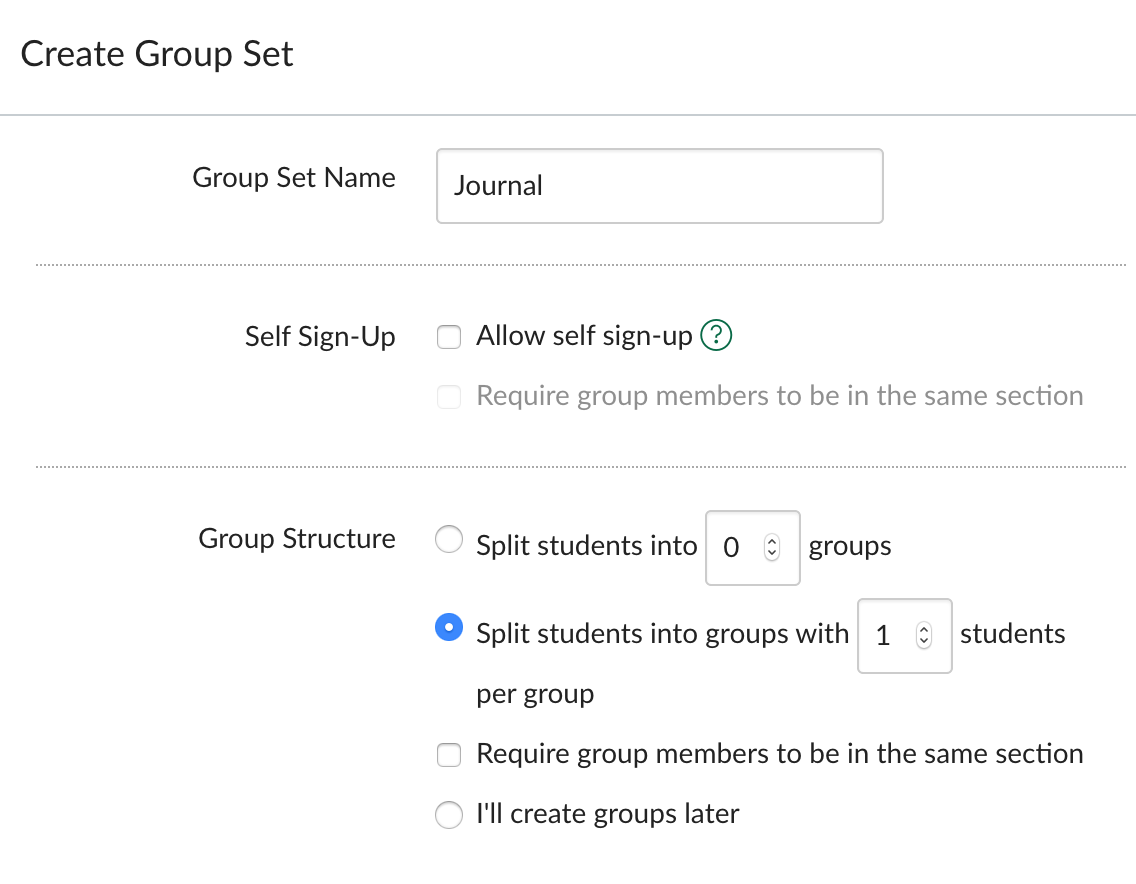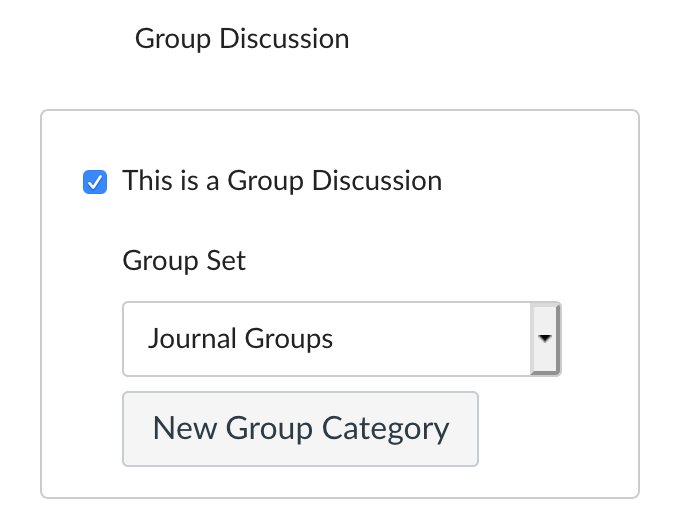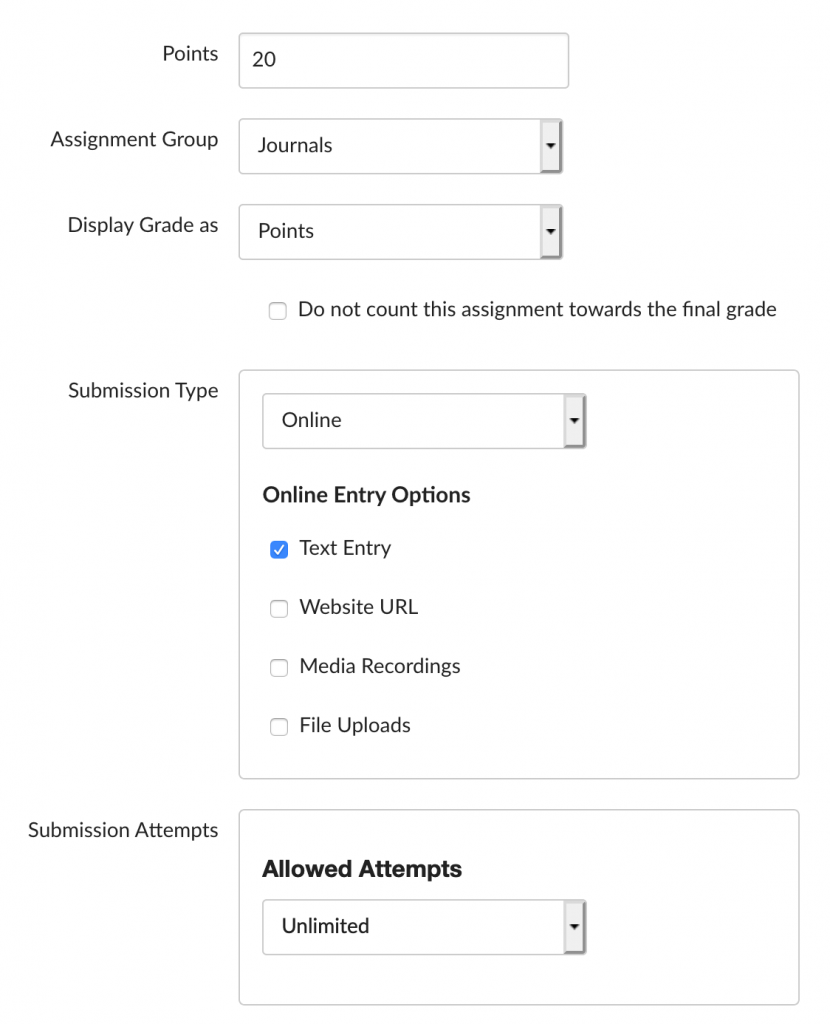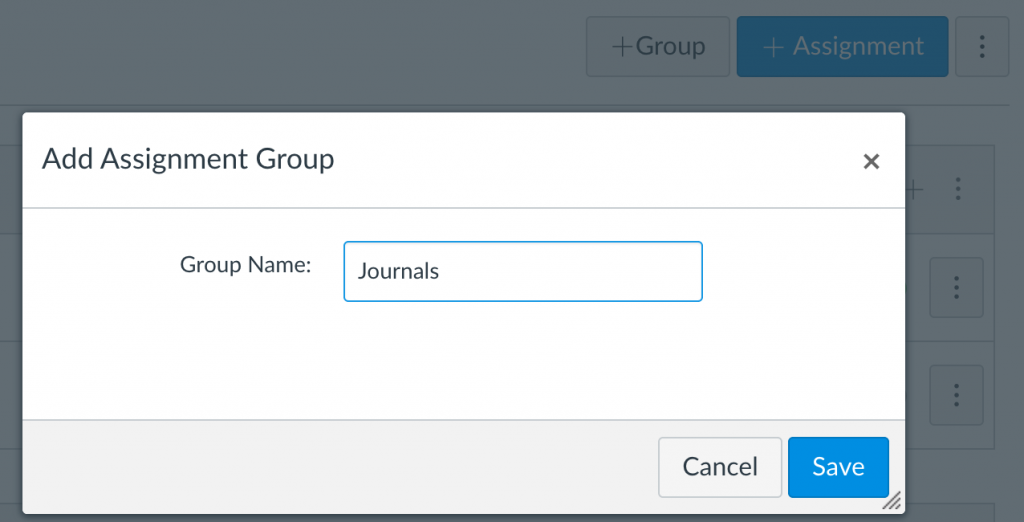One of the glaring omissions from the Canvas LMS toolkit is the Learning Journal. This tool often provided a personal space for student reflection where instructors could see evidence of learning from each student’s perspective. In Blackboard Learn there was a dedicated tool called Journals that allowed for these entries to be collected, shared and graded in a variety of configurations. We found that in situations where a discussion was not necessarily appropriate a reflective journal entry provided the evidence of learning that instructors needed to know their course design was having the desired effect.
In Canvas there is no Journal tool specific to this task and as we at the Distance Education Unit (DEU) work with instructors to migrate courses from one LMS to the other we’re beginning to find ways to recreate this activity using the available tools in Canvas. Here are a couple options to recreate a journal activity in Canvas.
The Group of One

In this scenario you’ll create a group set for each student by splitting students into groups with only 1 assigned student (fig. 1). These groups effectively become a quiet space for each student to journal from within. From here you have several options depending on how you wish to grade the journal activities.
The “Group of One” option allows students to utilize the Group Discussion tool which will effectively become their Journal. The advantage to this setup is that all the journal entries can be collected in one neat space. You can pop in and see each student’s progress anytime throughout the term whether you are marking on an ongoing basis or plan to mark everything at the end of term.

You may choose to pre-build all the Journal Entry Prompts as Discussion Topics ahead of time and add them to the Group Discussions (fig. 2) or you can simply provide the Journal prompts within the body of your weekly modules and have students use the same headings within their Journal (Group Discussion forum).
Grading Journal Entries can be done individually (grade every entry) or you can choose to mark just the final entry taking into consideration the whole term. Enable Grading within the editable options for every Discussion if you wish to grade them all, or enable grading for only the last Discussion if you wish to grade them as a whole.
Journals as Assignments
The second option is to simply create Journal entries as an assignment without separating students into groups of one. Again, depending on how you want to mark these Journal entries will determine how you set the assignments up.
Mark them all
If you wish to mark every entry then you’re probably best off to create an assignment for every module or even every journal prompt within a module if you want to mark them that finitely. Each assignment can get it’s own place in Grades and allow you to mark them each individually with feedback. Students will open a new assignment for each entry and will submit to each one individually.

That said, if you have several journal prompts within a weekly module you may choose to create one assignment for each module and allow for unlimited attempts (fig. 3), thus allowing students to return to their journal assignment each time they are prompted to do so in the module and resubmit more text to the assignment. When you go to mark these journals in SpeedGrader you’ll see a list of submissions to view in the top right corner of the screen (fig. 4). Each of these submissions can be seen separately by clicking on each submission date and time .

Mark them all as one
You may want to simply mark the semester’s worth of journal entries as one assignment giving students an overall mark for their entire journal. In this case, creating one assignment, again with unlimited attempts (fig. 2), allows students to continue to submit their journals responses from one place and creates just one assignment to grade in SpeedGrader.
Mark the Best
Another approach we often employ with journals is to give students a mark for their best reflective entries. You can do this in a couple different ways.

First, you can create an Assignment Group (not to be confused with group assignments) called Journals (fig. 5). Add all journal assignments to that group by dragging and dropping them or selecting that assignment group when you create the assignments. You can now edit the group by clicking the button on the right of the assignment group banner. Then have Canvas ignore the lowest scores of the grouped assignments (fig. 6).
button on the right of the assignment group banner. Then have Canvas ignore the lowest scores of the grouped assignments (fig. 6).

So, if you had 10 Journal Prompts throughout a course and wanted Canvas to ignore the lowest 2 scores it could do that. You can ensure certain assignments in the group aren’t considered in this equation by selecting them under the “Never Drop” options setting.
The second option is allowing students to self select their best or worst journal entries. They can simply notify you to ignore certain entries through an inbox message or other tool and you can ignore those posts. If you set up the Assignment group in the same way as described above then these will be scored as incomplete and dropped from the final grade automatically.
Image CC0 via Pexels


